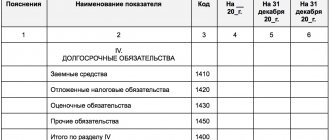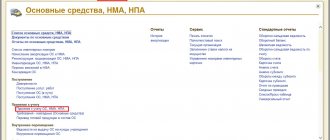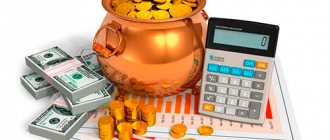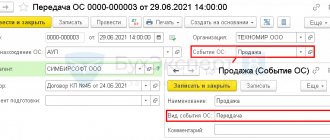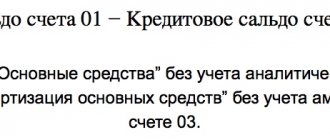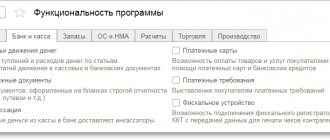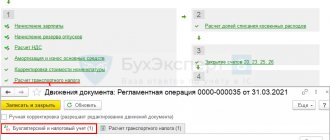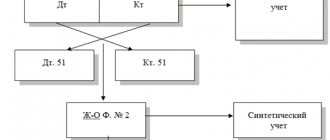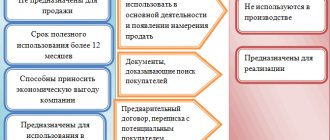Cash is what all organizations involved in the sale of goods and services carry out their activities for. Making a profit is the main goal of any business company in market conditions. All market participants must pay taxes on the money received to the state. And to accurately calculate these amounts, accurate accounting and reporting is necessary. For these purposes, there are many forms of reporting documents, one of which is the balance sheet. This article discusses issues such as types of funds in the balance sheet, cash in cash and non-cash forms, their equivalents, accounting accounts, rows in the table, as well as analysis tasks.
What are cash and cash equivalents?
Cash and cash equivalents include all cash and highly liquid assets with short maturities (typically 90 days or 3 months). This item is always classified as current assets on line 1250 of the balance sheet.
Take our proprietary course on choosing stocks on the stock market → training course
Cash equivalents include bank accounts and marketable securities, which are debt securities with maturities of less than 90 days.
However, cash equivalents often do not include shares or shareholdings because they can fluctuate in value.
Examples of cash equivalents include commercial paper, Treasury bills, and short-term government bonds with maturities of three months or less. Marketable securities and money market assets are considered cash equivalents because they are liquid and not subject to significant fluctuations in value.
What property needs to be depreciated in accounting and tax accounting under the simplified tax system?
Tax accounting. The concept of depreciable property is enshrined in paragraph 1 of Article 256 of the Tax Code of the Russian Federation. It says that a depreciable object is an object that is owned by the company, is used to generate income, lasts more than 12 months, and its cost exceeds 40,000 rubles.
In particular, depreciable property in the generally accepted sense is fixed assets (their list was approved by Decree of the Government of the Russian Federation dated January 1, 2002 No. 1) and intangible assets. Please note: in tax accounting under the simplified tax system, the cost of depreciable property is written off as expenses during the calendar year in equal quarterly installments. In this case, the property must be paid for and put into operation (clause 3 of Article 346.16 of the Tax Code of the Russian Federation).
Accounting. There is no clear definition of depreciable property. There are separate concepts of fixed assets and intangible assets for which depreciation is calculated.
Thus, a fixed asset is an object that is used in production activities, serves for more than 12 months, is not intended for resale and generates income in the future (clause 4 of PBU 6/01 “Accounting for fixed assets”). In this case, the company independently sets the cost criterion for classifying property as a fixed asset in its accounting policy. It cannot be more than 40,000 rubles, but may be less than this limit. For example, a company has the right to decide that an object will be a fixed asset if it costs more than 20,000 rubles. (clause 5 of PBU 6/01).
For an intangible asset, the characteristics are as follows: not intended for resale, lasts more than 12 months, has no tangible form. In this case, the initial cost of the asset can be anything. The main thing is that it be reliably determined based on acquisition costs (clauses 3 and 7 of PBU 14/2007 “Accounting for intangible assets”). In accounting, depreciation on fixed assets and intangible assets is accrued monthly during the service life, which must be more than one year (paragraph 5, paragraph 19 of PBU 6/01, paragraph 31 of PBU 14/2007).
However, not all fixed assets are depreciable. For example, land plots and environmental management facilities are not depreciated in accounting (paragraph 5 of clause 17 of PBU 6/01 “Accounting for fixed assets”). Therefore, they should be reflected in the balance sheet at their original cost (clauses 7 and 8 of PBU 6/01).
Information on how to prepare a balance sheet in a simplified form.
The second type of control variables is accrued reserves. True, “simplifiers”, being small businesses, may not create most types of established reserves.
For example, there is no need to create reserves for upcoming vacation payments to employees, for warranty repairs and warranty service (clause 3 of PBU 8/2010 “Estimated liabilities, contingent liabilities and contingent assets”).
However, there are also those reserves that, under certain conditions, are mandatory for all companies, including firms using the simplified tax system (clauses 70 and 77 of the Accounting Regulations, approved by order of the Ministry of Finance of Russia dated July 29, 1998 No. 34n). This is a reserve for doubtful debts, for a decrease in the value of material assets and for the depreciation of financial investments. Accordingly, if during 2013 you formed any reserves, then certain balance sheet items must be reduced by their value. So, reduce accounts receivable by the amount of the reserve for doubtful debts (letter of the Ministry of Finance of Russia dated December 23, 2005 No. 07-05-06/353). For the amount of the reserve for depreciation of financial investments - financial investments (clause 38 of PBU 19/02 “Accounting for financial investments”). For the amount of the reserve for reducing the value of material assets - inventories (clause 25 of PBU “Accounting for inventories”) (see Table 1).
Concept and understanding of the category
Cash and cash equivalents are a group of assets owned by a company. For ease of understanding, this is the total value of cash on hand and cash-like assets. If a company has cash or cash equivalents, the totality of these assets is always shown on the top line of the balance sheet. This is because cash and cash equivalents are current assets, which means they are the most liquid of the short-term balance sheet items.
Important! Companies with significant amounts of cash and cash equivalents may have a positive view of their ability to meet short-term debt obligations.
Difference between cash and cash equivalents
The key differences are presented in the table below.
| View | Characteristics and distinctive features |
| Cash | Cash in the form of currency. They include all bills, coins and banknotes. |
| Cash equivalents | For an investment to qualify as equivalent, it must be readily convertible into cash and be subject to negligible value risk. Therefore, an investment usually qualifies as a cash equivalent only if it has a short maturity, say three months or less. |
The importance of using these categories
There are several main reasons why these categories are significant. They are reflected in the table below.
| No. | Cause | Characteristics and description | Clarification |
| Source of liquidity | Cash equivalents are held to satisfy short-term cash obligations and not for investment or other purposes and are an important source of liquidity. Thus, companies want to have a cash cushion to withstand unforeseen situations such as revenue shortfalls, equipment repairs or replacements, or other unforeseen circumstances not budgeted for. | Liquidity ratio calculations are important in determining the rate at which a company can pay off its short-term debt. Various options for liquidity ratios include: total liquidity ratio, current ratio, quick ratio. Total liquidity ratio: (cash and cash equivalents + marketable securities) ÷ current liabilities Current ratio: current assets ÷ current liabilities. Quick ratio: (Current asset - stock) ÷ Current liabilities. | |
| Speculative acquisition strategy | Another good reason for saving is an acquisition in the near future. | As an example, consider the cash balance on Apple Inc's balance sheet: · Cash = $13.844 billion · Total assets = $231.839 billion Cash as % of total assets = 13,844 / 231,839 ~ 6% · Total sales in 2014 = $182,795 Cash as % of Total Sales = 13,844 / 182,795 ~ 7.5% Investments of $13.844 billion (cash) + $11.233 billion (short-term investments) + $130.162 billion (long-term investments) amount to $155.2 billion. The combination of all this indicates that Apple may be looking for some kind of acquisition in the near future. |
Explanation of the balance sheet according to the lines of section 4
This section of the balance sheet reflects the status of settlements on short-term loans, the amount of deferred tax liabilities, estimated and other liabilities:
Balance sheet line
Decoding
How is the balance formed and from what accounts is it taken?
Name
code
Balance of outstanding long-term loan taken out for a period of more than 12 months
Deferred tax liabilities (DTL)
Formed if tax accounting in a company differs from accounting - the differences are formed according to the account. 77, the balance of outstanding obligations is the credit balance on the account. 77
The amount of reserves for upcoming expenses planned in the long term, for example, for reconstruction - the credit balance on the account. 96
K/t 96 in terms of reserves formed for events that will occur no earlier than in a year
Reflect borrowed (not own!) funds that are not indicated in line 1410. This may be long-term debt to a counterparty or the budget, incl. on bills of exchange, target receipts with a long-term perspective of coverage
K/t 60 + K/t 62 + K/t 68 + K/t 69 + K/t 76 + K/t 86 (for long-term debt)
Total for Section IV
Sum of partition rows
Pros and cons of availability
Positive aspects of having:
- maturity and ease of conversion. They are beneficial from a business perspective because a company can use them to meet any short-term needs;
- financial repository. Retained equity is a way of storing money until a business decides what to do with it.
Negative aspects of having:
- loss of income: sometimes companies set aside an amount in equivalents that exceeds the amount needed to cover immediate obligations, depending on market conditions. When this happens, the company loses potential income because money that could have generated higher profits elsewhere has been transferred to a cash account;
- low yield: many equivalents have yield. However, the interest rate is usually low. A low interest rate makes sense given that equivalents are low risk.
The most common options and types
Cash and cash equivalents help companies in meeting their working capital needs as these liquid assets are used to pay off current liabilities, which are short-term debts and bills.
Cash is money in the form of currency and includes all bills, coins and notes.
A demand deposit is a type of account from which funds can be withdrawn at any time without notifying the institution. Examples of demand deposit accounts include checking and savings accounts. All demand account balances at the date of the financial statements are included in total cash.
Foreign currency. Companies holding more than one currency conduct transactions such as currency exchange. Currency for foreign countries must be converted into reporting currency for financial purposes. The conversion must provide results comparable to those that would have occurred if the business had completed operations using only one currency. Foreign currency revaluation losses are not reflected in cash and cash equivalents. These losses are reflected in a separate document.
Cash equivalents are investments that can be easily converted into cash. Investments must be short-term, usually with a maximum duration of three months or less. If the investment period exceeds 3 months, it should be classified in an account called “other investments”. Cash equivalents must be highly liquid and easily traded in the market. Buyers of these investments must be easily accessible.
All cash equivalents must have a known market price and should not be subject to fluctuations in value. The value of cash equivalents cannot be expected to change significantly prior to maturity.
Certificates of deposit may be considered cash equivalents depending on their maturity date.
Preferred shares may be considered cash equivalent if they are purchased close to the maturity date and are not expected to fluctuate significantly in value.
What cash and equivalents do not include
There are some exceptions for current assets and current assets classified as cash and cash equivalents.
Credit collateral. Exceptions may exist for short-term debt instruments such as Treasury bills if they are used as collateral for an outstanding loan or line of credit. Prohibited T-bills must be identified separately. In other words, there may be no restrictions on the conversion of any of the securities listed as cash and cash equivalents.
Inventories. The inventory that a company has in stock is not considered cash equivalent because it cannot be easily converted into cash. In addition, the value of inventory is not guaranteed, meaning there is no certainty as to the amount that will be received for the liquidation of these assets.
Error No. 1 When drawing up the balance, regulatory values are not taken into account
Paragraph 35 of PBU 4/99 “Accounting statements of an organization” states that the value of property and liabilities must be reflected in the balance sheet minus regulatory values. What are these quantities? First of all, those amounts that reduce the value of a balance sheet item, but cannot be seen directly in the report. We have given a list of regulating quantities in table. 1.
Table 1 List of regulatory quantities that reduce balance sheet indicators
| Control variable | On what account is it reflected? | What indicators does it reduce? |
| Depreciation of fixed assets | 02 subaccount “Depreciation of fixed assets” | The amount of accrued depreciation reduces the original cost of fixed assets. That is, it is deducted from the debit balance of account 01 |
| Depreciation of fixed assets that are profitable investments | 02 subaccount “Depreciation of profitable investments in material assets” | Depreciation charges reduce the initial cost of an income-generating investment. That is, it is subtracted from the debit balance of account 03 |
| Amortization of intangible assets | 05 | The amount of accrued depreciation reduces the price of intangible assets. That is, it is subtracted from the debit balance of account 04 |
| Provision for doubtful debts | 63 subaccount “Provisions for short-term doubtful debts” | The value of the provision reduces short-term accounts receivable. That is, it is deducted from the debit balance on accounts 60, 62, 68, 69, 71, 73 (76) (except for interest-bearing loans), 75 |
| 63 subaccount “Provisions for long-term doubtful debts” | The amount of the provision reduces long-term accounts receivable. That is, it is minus from the debit balance of accounts 62, 60, 73 (76) (except for interest-bearing loans) | |
| Provision for impairment of financial investments | 59 subaccount “Provision for impairment of short-term financial investments” | The amount of the reserve reduces short-term financial investments. That is, it reduces the debit balance of accounts 58, 55 of the “Deposit Accounts” subaccount, 73 (76) (in terms of interest-bearing loans) |
| 59 subaccount “Provision for impairment of long-term financial investments” | The amount of the reserve reduces long-term financial investments. That is, it is subtracted from the debit balance of accounts 58, 55 of the “Deposit Accounts” subaccount, 73 (76) (in terms of interest-bearing loans) | |
| Reserve for reduction in the value of material assets | 14 | The amount of the reserve reduces the cost of inventories. That is, it is subtracted from the debit balance on accounts 10, 11, 15, 16 (or credit balance 16), 20, 21, 23, 29, 41 (less the balance on account 42, if goods are included in sales prices), 43, 44 , 45, 46 |
For example, the governing value is depreciation accrued on fixed assets and intangible assets. This conclusion was confirmed by the Russian Ministry of Finance in letter dated January 30, 2006 No. 07-05-06/16.
Depreciation reduces the original cost of assets, so depreciable assets must be shown in the balance sheet at their residual value.
On a note
Calculation example
Example No. 1. For example, suppose that the opening balance of the cash account was 10,000 rubles, the total amount of debits for the year was 15,000 rubles, and the total amount of credits for the year was 8,000 rubles.
Let's add each account's total debit to its opening balance. For example, let's add 15,000 tr. to the total amount of debits to the initial balance on the cash account of 10,000 tr., which is equal to 25,000 tr.
We subtract the total number of credits of each account from each result to calculate the year-end balance for each account.
For example, we subtract 8,000 rubles. in the total amount of loans on the cash account from the result of 25,000 tr. This equals a final cash balance of 17,000 rubles.
We will calculate the ending balance of each account to determine the balance at the end of the year in cash and cash equivalents.
For example, if the year-end balances for cash, wages, petty cash investments and money market investments are respectively 17,000, 5,000, 1,000 and 4,000 TR, then their amount should be calculated. It is equal to 27,000 tr. as the balance of cash and cash equivalents at the end of the year.
Indicate the balance of cash and cash equivalents at the end of the year in line 1250 of the balance sheet in the current assets section.
Investments in non-current assets
For each type of non-current assets, section I of the balance sheet has a separate line. If the asset is formed, then there are no issues with choosing a line. Difficulties arise in reflecting investments in assets, i.e. costs for their acquisition (creation, etc.), which are still accounted for in account 08. After all, the balance sheet does not provide special lines for them.
There are two ways to show investments on your balance sheet:
- Include their value in the line provided for the relevant asset. For example, investments in fixed assets under construction (account 08-3) should be shown on line 1150 “Fixed assets”, investments in intangible assets (account 08-5) – on line 1110 “Intangible assets”, etc. This method follows from the example of drawing up Explanations to the Balance Sheet and the Statement of Financial Results (Appendix No. 3 to Order of the Ministry of Finance of Russia dated July 2, 2010 No. 66n “On Forms of Financial Statements of Organizations”). In it, for each line dedicated to a particular asset, there is also a table with a breakdown of the corresponding work in progress. This allows us to conclude that the asset indicator also includes the cost of investments in it.
- Do not include investments in the asset lines, but reflect them separately. In this case, you can either enter an additional line into the balance sheet, or, if the indicators are not significant, reflect them on line 1190 “Other non-current assets”.
The second option seems to us more methodologically correct. After all, the very fact that as of the reporting date the investments continue to be listed on account 08 indicates that the conditions for recognizing the corresponding asset are not met. Consequently, there is no reason to reflect it on the balance sheet.
You can choose any of the methods, the main thing is that it is the same for all your investments.
What can increase cash on the balance sheet?
Companies can increase cash through increased sales, collection of overdue accounts, control of expenses, and financing and investment. These options are reflected in the table below.
| Growth option | Characteristic |
| Sales growth | Increased sales usually mean higher levels of cash on the balance sheet. When a company makes a cash sale, the accounts must increase the sales account on the income statement and the cash account on the balance sheet. When it receives cash payments on credit accounts, the company converts the amounts from accounts receivable to cash. Innovative and quality products, targeted marketing and superior customer service are some of the ways to consistently achieve higher sales and gain a competitive advantage in the market. |
| Accounts receivable management | Some sales are cash and others are on credit. The accounts receivable balance in the current assets section of the balance sheet contains outstanding credit accounts. Although a business may receive most payments during the billing period, some bills are past due while others are not due for collection. More stringent credit control procedures, such as reducing credit limits for customers who have fallen behind in the past or waiving loans to customers experiencing financial difficulties, can reduce the number of overdue accounts and increase cash flow. Sending automatic email reminders, following up with overdue customers, and offering discounts for early payment of invoices are some of the other ways to manage accounts receivable and increase cash on your balance sheet. |
| Cost control | Controlling expenses increases cash levels. Sales growth is an important but not sufficient condition for increasing cash flow. For example, if a five percent increase in sales requires a seven percent increase in marketing spending, cash levels may actually decrease rather than increase. Companies incur variable costs such as direct labor and raw materials. The companies also recorded overhead costs such as administrative staff salaries and advertising. Negotiating better terms with suppliers and adjusting production shifts to accommodate rising or falling demand are ways to manage variable costs. Streamlining business processes, reducing travel, and using contractors instead of in-house employees are some ways to reduce overhead costs. |
| Financing and investment activities | Companies can increase cash levels through financing and investing. Financing activities include proceeds from bank loans and from issuing shares or bonds to investors. For small businesses that may not have easy access to financial markets, an infusion of cash from founding partners, venture capitalists and angel investors will increase cash on the balance sheet. Paying dividends and interest from investments in stocks and bonds also increases cash levels. Selling excess capital investments, such as regional offices, distribution centers, excess equipment or unused vehicles, increases cash on the balance sheet. |
| Other | Other ways to increase cash include selling investments in subsidiaries or spinning off business units. |
Error No. 4 Accounts receivable and payable are offset against each other
It often happens that mutual debt arises between two companies. For example, you owe money to an organization, and it in turn owes you. Accordingly, in your accounting, the same person is both a debtor and a creditor. And sometimes accountants carry out an internal offset in their accounting, after which they show the amount remaining after the offset in the balance sheet. In other words, both receivables and payables are reduced.
And such actions are incorrect, since it is possible to close mutual debt on the balance sheet only if a real settlement of claims with counterparties was carried out, as a result of which the debts were repaid and all this is reflected in the corresponding accounting entries.
But just like that, offsetting between the items of assets and liabilities of the balance sheet is prohibited (clause 34 of PBU 4/99 and clause 40 of Regulation No. 34n). Moreover, the balance of all active and passive accounts must be reflected in detail in the balance sheet.
Let us recall that active-passive accounts are accounts in which both property (as in active accounts) and the sources of its formation (as in passive accounts) are simultaneously recorded.
Thus, the following accounting accounts are active-passive: 16, 40, 62, 68, 69, 71, 73, 75, 76, 79, 84, 90, 91 and 99.
They are used to account for settlements with business partners, which may result in both receivables and payables.
A feature of active-passive accounting accounts is that they can have both a debit and a credit balance at the same time (this means an expanded balance).
Hints from the site e.26-2.ru
FAQ
Question No. 1. What is included in cash?
Answer. These include such means as:
- money;
- currency;
- cash in current accounts;
- cash in savings accounts;
- bank amounts;
- Money transfers.
Question No. 2. What is considered cash equivalents?
Answer:
Answer. These include such means as:
- short-term government bonds;
- bills;
- securities;
- money market funds;
- treasury bonds.
Question No. 3. What are the main criteria for classifying cash and cash equivalents?
Answer. The two main criteria for classification as a cash equivalent are that:
- the asset can be easily converted into a known amount of cash;
- it must be so close to the maturity date that there is little risk of changes in value due to changes in interest rates at the time of maturity.
Question No. 4. In what situations is cash and cash equivalents analysis used?
Answer. Information about cash and cash equivalents is sometimes used by analysts in comparison to a firm's current liabilities to assess its ability to pay its bills in the short term. However, this analysis may be flawed if there are accounts receivable that can be easily converted into cash within a few days.
Question No. 5. What is included in cash?
Answer. In economic terms, cash is the form of exchange for all business transactions and activities of a company. In other words, it is a standard payment method for businesses. This is a banknote that is legal tender for all public and private debts.
Question #6 : Are certificates of deposit included in this category?
Answer. Yes, certificates of deposit are short-term securities that are easily converted into a known amount of money in a short period of time. Certificates of deposit are always included in cash equivalents.
Balance lines 2021: decoding of the 3rd section
The third section of the liabilities side of the balance sheet contains information about the presence of equity capital and reserves in the company. The balance breakdown will be as follows:
Balance sheet line
Decoding
How is the balance formed and from what accounts is it taken?
Name
code
Amount of authorized capital
Own shares purchased from shareholders
This is a negative indicator on the balance sheet (indicated in parentheses), indicating the balance of the company's shares, which it bought back from participants for intended resale or cancellation
The amount of additional valuation of fixed assets and intangible assets resulting from revaluation (revision of the initial value of property), recorded in the account. 83
K/t 83 (in terms of additional valuation of fixed assets and intangible assets)
The amount of additional capital without taking into account the revaluation carried out, for example, upon receipt of property - the credit balance on the account. 83
K/t 83 (except for revaluation amounts)
The amount of the formed reserve fund or other funds formed by distribution from the company’s profits is the credit balance of the account. 82
Balance sheet line 1370 - decoding reflects the result of the enterprise's activities: the amount of profit remaining in the company after taxes or the amount of loss. A credit balance means the presence of retained earnings, a debit balance means a loss.
One way:
D/t 99 + D/t 84 (loss is indicated in parentheses);
Total for Section III
Total line by section
Sum of section row indicators

